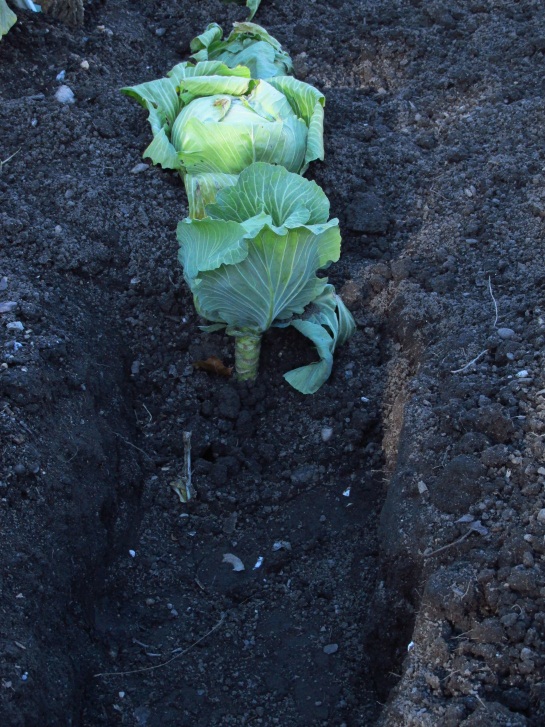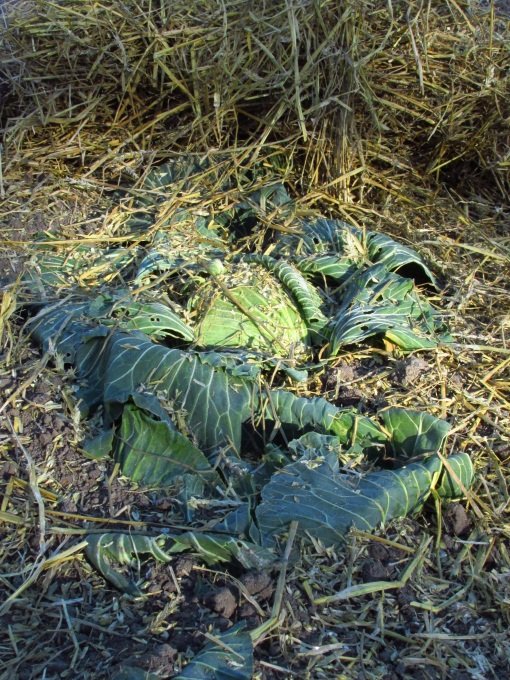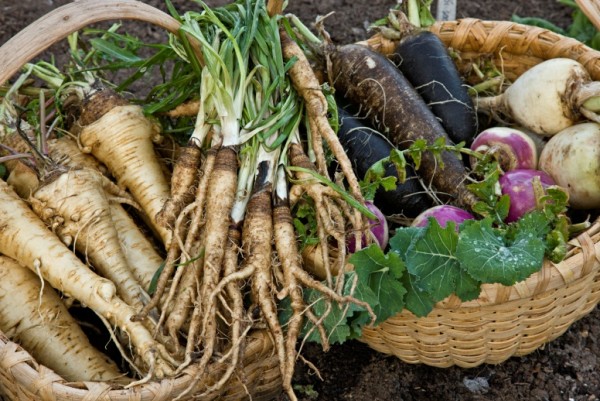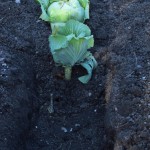 With the colder weather of mid-winter our selection of greens are greatly reduced except for those grown in frames or stored in trenches in the ground.Cabbages are particularly eligible for the latter treatment and it is a common practice among market gardeners in London as explained by Mr. Miller in The Gardeners Dictionary, “The gardeners near London pull up their Cabbages in November, and trench their ground up in ridges, laying their Cabbages against their ridges as close as possible on one side, burying their stems in the ground: in this manner they let them remain till after Christmas, when they cut them for the market; and although the outer part of the Cabbage be decayed (as is often the case in very wet or hard winters), yet if the Cabbages were large and hard when laid, the inside will remain sound.”
With the colder weather of mid-winter our selection of greens are greatly reduced except for those grown in frames or stored in trenches in the ground.Cabbages are particularly eligible for the latter treatment and it is a common practice among market gardeners in London as explained by Mr. Miller in The Gardeners Dictionary, “The gardeners near London pull up their Cabbages in November, and trench their ground up in ridges, laying their Cabbages against their ridges as close as possible on one side, burying their stems in the ground: in this manner they let them remain till after Christmas, when they cut them for the market; and although the outer part of the Cabbage be decayed (as is often the case in very wet or hard winters), yet if the Cabbages were large and hard when laid, the inside will remain sound.”
After digging the trench we transplant the cabbages by loosening the soil with a fork around the plants, preserving as many roots as possible and then, being cautious that no soil falls within the leaves; the plants are buried so that only the top of the head is above ground.
Once they are securely healed in we have found that a top dressing of straw further secures them from inclement weather and we can pull them as required over the rest of the winter months.
Though we may be somewhat limited in our selection of greens we are now blessed with an assortment of roots which are the true stalwarts of the winter garden. This includes the parsnip, salsify, carrots, turnip and the winter radishes. This hardy group of vegetables has long formed the foundation of the soups and stews that are so welcome in the winter diet.
They are nutritious, easy to grow and easily stored either in the ground or in the cellar. In the next few weeks we will examine them individually and explore their varieties.




Randy says
Wes, I am about to get peach trees here in Moore Co
NC and will be planting in the Candor area, can I put
some 3 yr old dung (horse ) in my hole or will the new
trees be hurt
Thanks
Love your gardens
Randy and Lina Brooks
Dear Randy,
I often hear advice on preparing the planting hole for trees and shrubs when we should be considering the root zone. Aged dung is a wonderful way to build the soil but I would recommend composting the soil throughout the planting area with aged manure and then digging and filling the hole with the resulting mixture. You do not want the soil in the planting hole to be markedly different from the surrounding soil as water does not cross soil barriers readily. This is the reason putting gravel in the bottom of a planting hole actually retards drainage rather than improving it and gives rise to the old saying “fine over coarse, growers remorse.” So prepare the root zone, not the planting hole.
With hopes for a healthy orchard and a bountiful harvest I remain, Yr. humble servant,
Wesley Greene